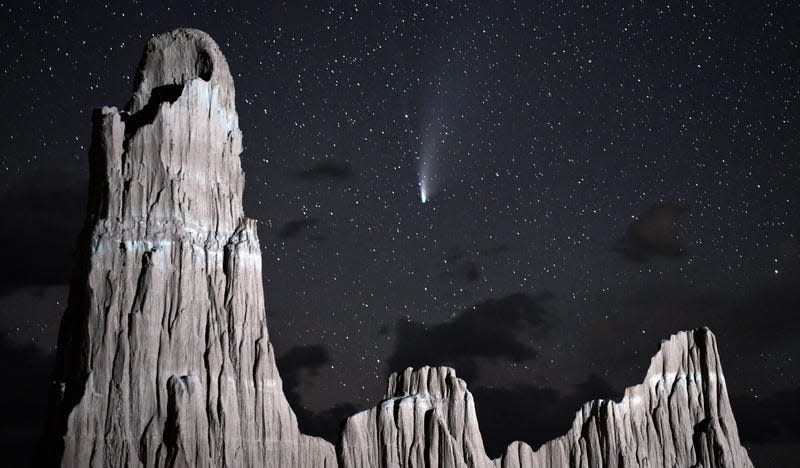Another Bright Comet Is Heading to Earth

An incoming comet recently spotted by telescopes in China and South Africa could be as bright as a planet in the night sky next year, according to astronomers who studied the object.
The comet—an accumulation of rock, dust, and ice—is called C/2023 A3 (Tsuchinshan-ATLAS). It was discovered by astronomers at the Purple Mountain Observatory in China in January and subsequently by the Asteroid Terrestrial-Impact Last Alert System (ATLAS) on February 22, according to the Minor Planet Center.
Read more
These Winning Close-Up Photos Show Life That's Often Overlooked
Remembering Enterprise: The Test Shuttle That Never Flew to Space
The comet was later seen in images captured in December by Palomar Observatory, according to LiveScience.
The object’s orbit is large and elliptical, meaning it completes a journey around the Sun every 80,660 years. Its closest approach to the Sun will happen in September 2024, according to EarthSky, and its closest approach to Earth is expected to be on October 13, 2024.
But the visitor faces potential annihilation. C/2023 A3 will be getting closer than Mercury to the Sun—a hot ball of gas, if you forget, which could heat up the comet to the point of disintegration.
By astronomers’ assessment, the comet will outshine the Green Comet (C/2022 E3 (ZTF)), which zipped by Earth for the first time in 50,000 years last month. The Green Comet’s brightness peaked at around +4.6, visible in very clear skies to sharp naked eyes but more easily with telescopes.
Should C/2023 A3 handle the Sun’s warmth, it could reach a magnitude of -5 at its brightest, roughly corresponding to the brightness of Venus in the night sky. (For reference, the apparent magnitude of the Sun is -26.7, and the full Moon’s is -11.)
We’ll know more about the comet’s potential survivability—as well as details, like its size—as it continues its trek toward and around the center of our solar system.
More: Meteorite Hunters Find 17-Pound Space Rock in Antarctica
More from Gizmodo
Sign up for Gizmodo's Newsletter. For the latest news, Facebook, Twitter and Instagram.

